Overview
NocoDB is an open-source backend that enables structured data management without writing code. When integrated with a Release0 agent, it allows for dynamic, data-driven interactions that enhance the functionality and personalization of your automated experiences.Advantages of Using NocoDB with Release0 Agent
Connecting NoCodeDB to your Release0 agent allows you to:- Fetch and display content based on User Inputs.
- Create responsive flows with database-driven logic.
- Adapt dialogs in real-time based on database values.
- Create new records (e.g., form submissions).
- Read data for personalization or decision-making.
- Update fields based on conversation outcomes.
- Delete entries if needed.
Example: Display product options based on the user’s selected category using {{user.selected_category}}.
This guide explains how to use the NocoDB block to interact with your NocoDB tables in an Agent Dialog. You can create, update, or retrieve data from your NocoDB tables. This includes identifying the Table ID and configuring the Search Records action effectively.
How to Find Your Table ID
To locate your Table ID in NocoDB:- Navigate to your NocoDB dashboard.
- Locate your desired table in the left-hand sidebar.
- Click on the three dots icon (
...) next to the table name. - Find the Table ID in the pop-up menu (as shown in the image). Copy it for use.
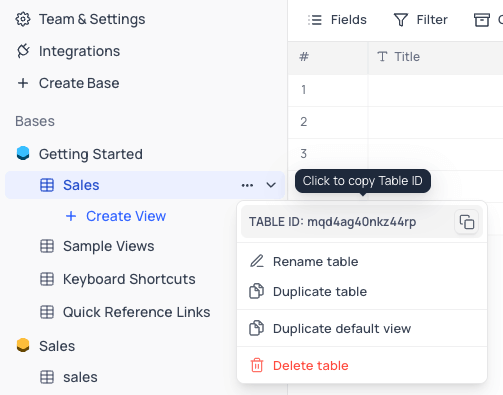
Using the Search Records Action
The Search Records action in NocoDB allows you to retrieve specific records from your tables. This action requires:- Table ID (mandatory)
- View ID (optional, for filtering specific views)
- Additional configuration such as filters and response mapping.
Steps to Configure
- In your Agent Dialog editor, select the NocoDB block.
- Choose the Search Records action.
- Input the following fields:
- Table ID: Paste the copied Table ID.
- View ID: If you want to filter data by a specific view, add its ID here.
- Filter: Set conditions to retrieve
All,First,Last, orRandomrecords. - Response Mapping: Map retrieved data fields to variables for use in your agent.
Example Setup
Input
Workflow Example
In this simple example we are going to create a work order record for a repair company. To keep the example simple we will only ask for the user name, email, and serial number of the device. The first step is to create a Text Block to greet the user and ask for their name, email, and serial number.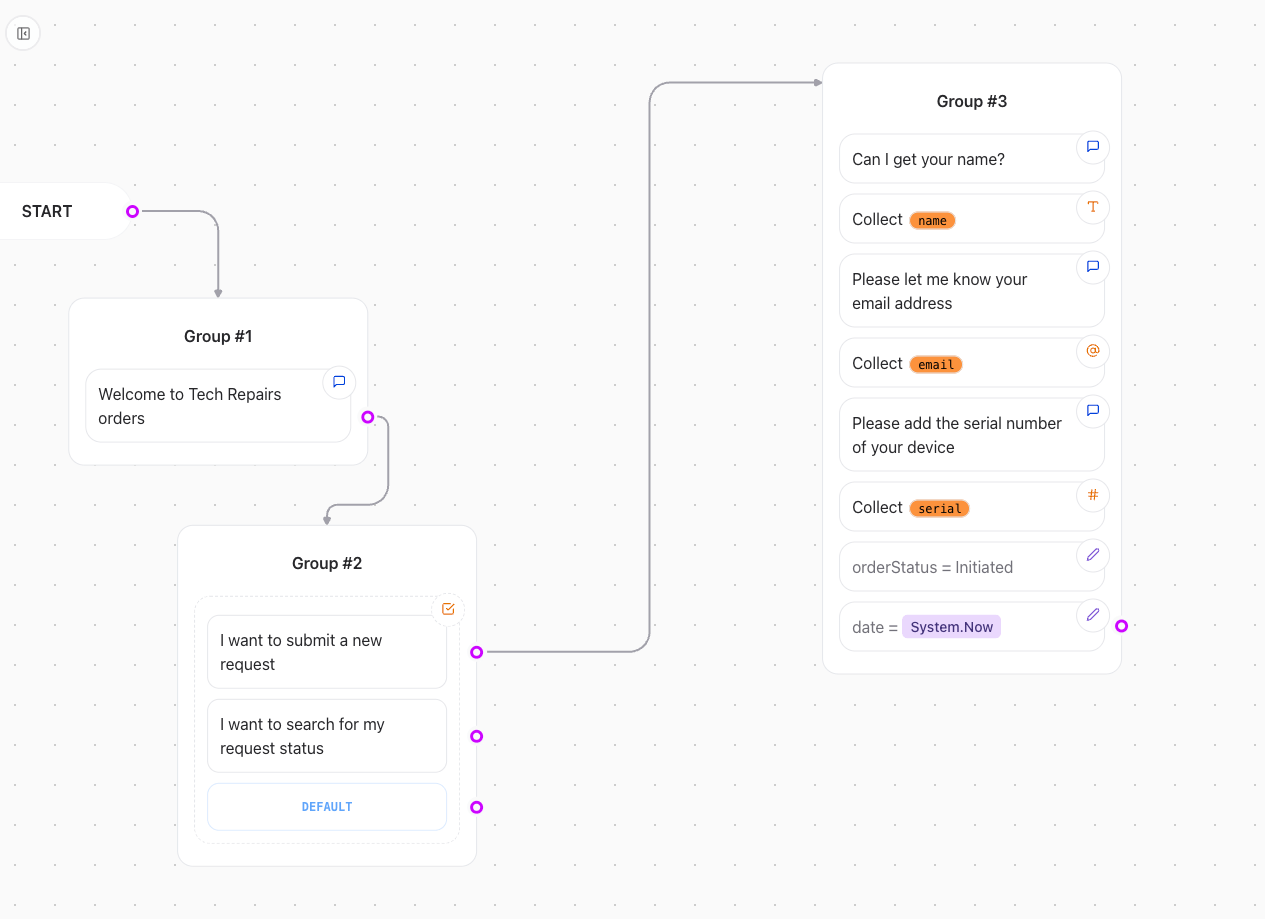
- Name: Text
- Email: Text
- Serial: Text
- Date: Text
- OrderStatus: Text

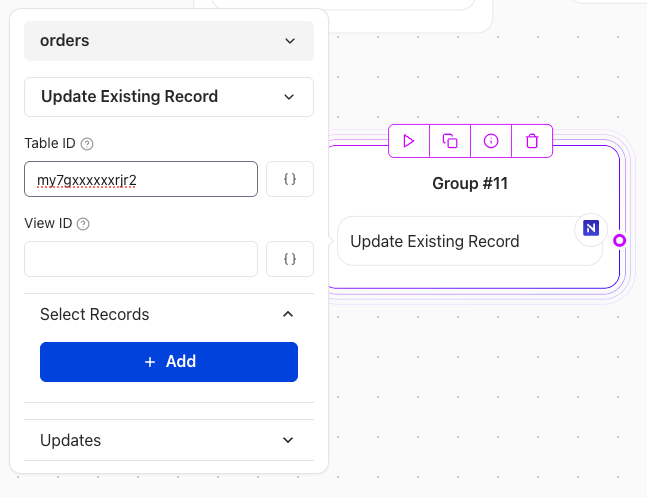
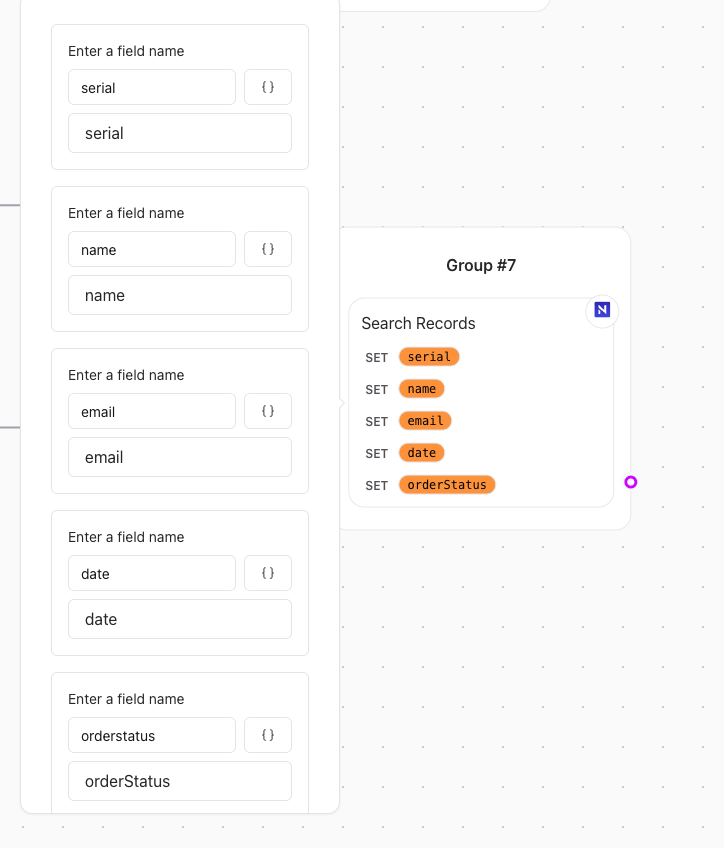





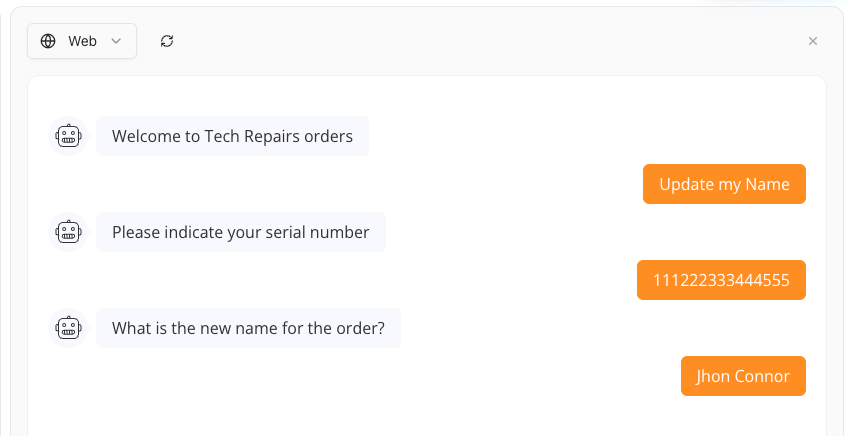

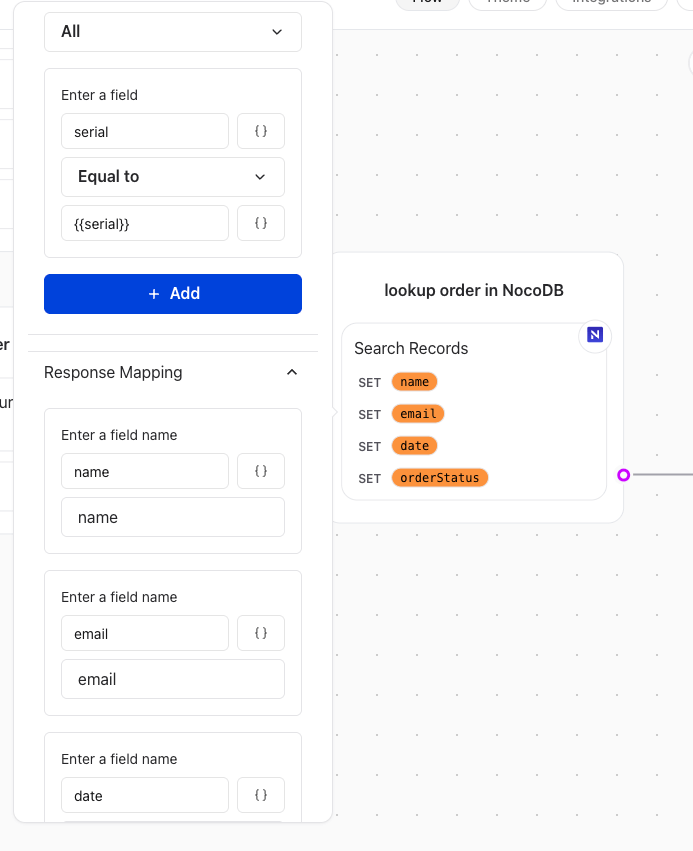
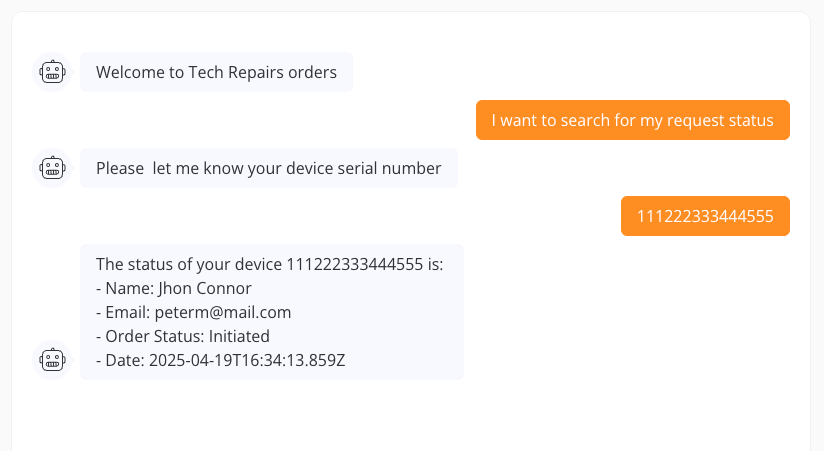
Validation and Testing
Before deploying, ensure:- The correct Table ID and View ID are used.
- Filters return the expected results.
- Mapped variables work correctly within the agent’s workflow.